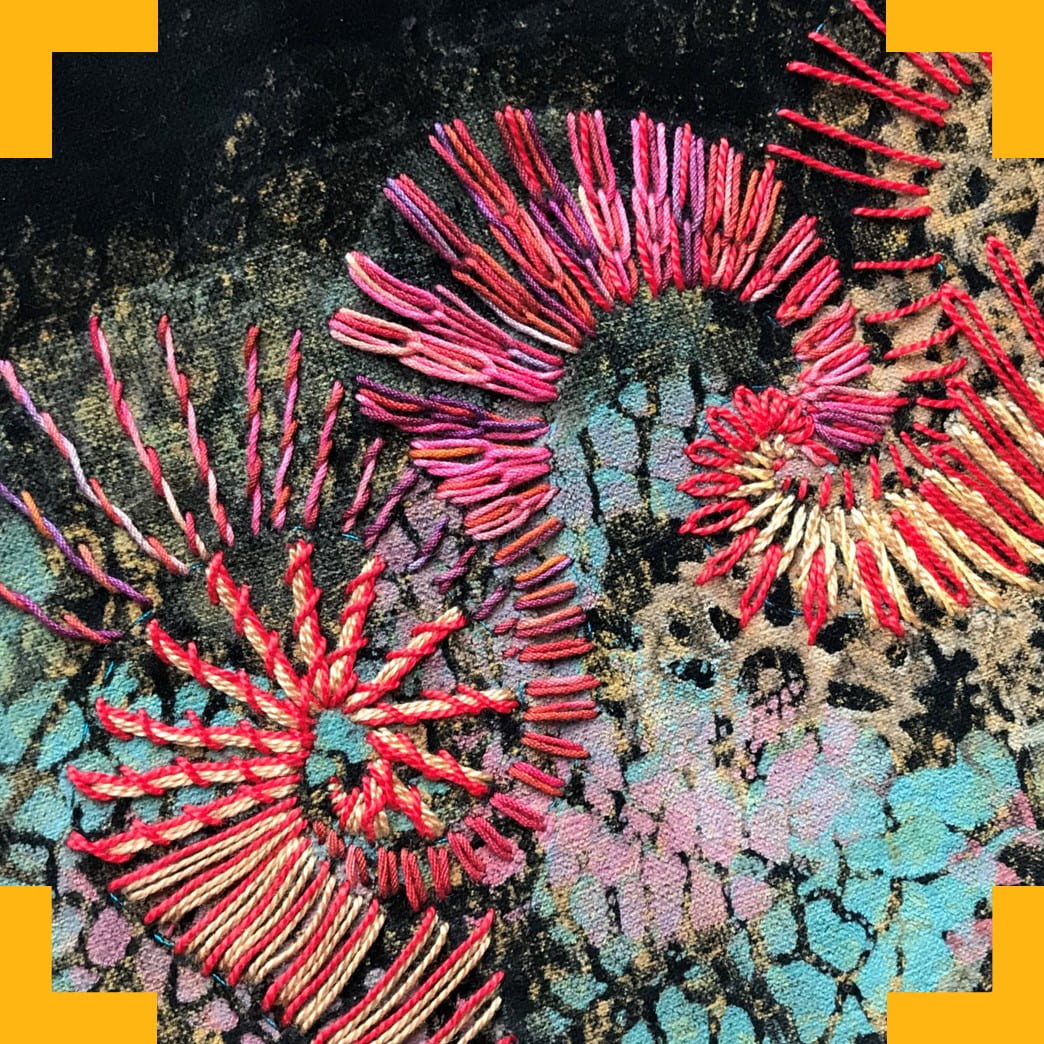Stitching – Obsession – Wellness: Reclaiming the therapeutic value of stitch
Can both productive stitch and subversive stitch be understood as therapeutic? This research seeks to explore the role of sewing in 19th century asylums and their relevance to contemporary wellbeing.

Mental illness is a leading cause of disability in the UK. Despite understanding the importance of paid employment, only 67% of those currently suffering from mental illness are employed. When Glenside Hospital (formerly Bristol Lunatic Asylum) was operational, 65% of sectioned patients were usefully employed in a model of “Moral Treatment” that promoted the therapeutic effects of occupation. Women had the opportunity to access the labour market and practise a skill through needlework.
What did the project involve?
The research sought to scientifically test the therapeutic benefits of stitching by measuring whether the rhythmic, repetitive action of stitching can calm and focus the anxious brain into a meditative state. Through this they sought to contribute to a re-evaluation of the 19th century asylum as a therapeutic space. The research also explored practices of “non-productive” or subversive needlework within 19th century asylums, which displayed emotional and creative expression. The team assessed the emotional role of both therapeutic and subversive stich and deepened understanding of the relationship between women, creative work and wellness.
Who are the team and what do they bring?
- Merle Patchett (Geographical Sciences) is a human geographer interested in theorising and examining historical geographies of craftwork, skill and apprenticeship including the historic gendering of skill.
- Jan Connett (independent textile artist and Bristol Health Partners) is interested in behaviours that tip between self-support and obsession. She will work collaboratively to understand and interpret the intent of 19th century stitchers and the contribution of their creativity to wellbeing.
- Amber Roguski (Physiology, Pharmacology and Neuroscience) will co-design and carry out EEG experiments to investigate potential effects of stitching on emotions.
- Anwyl Cooper-Willis (Glenside Hospital Museum) brings extensive knowledge of the history of Glenside Hospital Museum and its relationship with sewing.
- Stella Man (Independent artist and Glenside Hospital Museum) has experience of involving people in projects and leading co-produced workshops.
- Claire Braboszcz’s (Experimental Psychology) interests lie in attention and mental states such as meditation and hypnosis and is an expert in EEG data recording and analysis.
- Thomas Roeske (Prinzhorn Collection, Heidelberg University) specialises in the interpretation of artworks in psychiatric and psycho-historical contexts.
What were the results?
The team sought to co-produce:
- Neuroscience experiments (electroencephalogram: EEG) to examine any therapeutic effects of stitching
- Textile installations that draw on research findings generated by the project
- An ongoing reflective journal
- An academic paper assessing the emotional benefits of directed and subversive stitching in asylums

